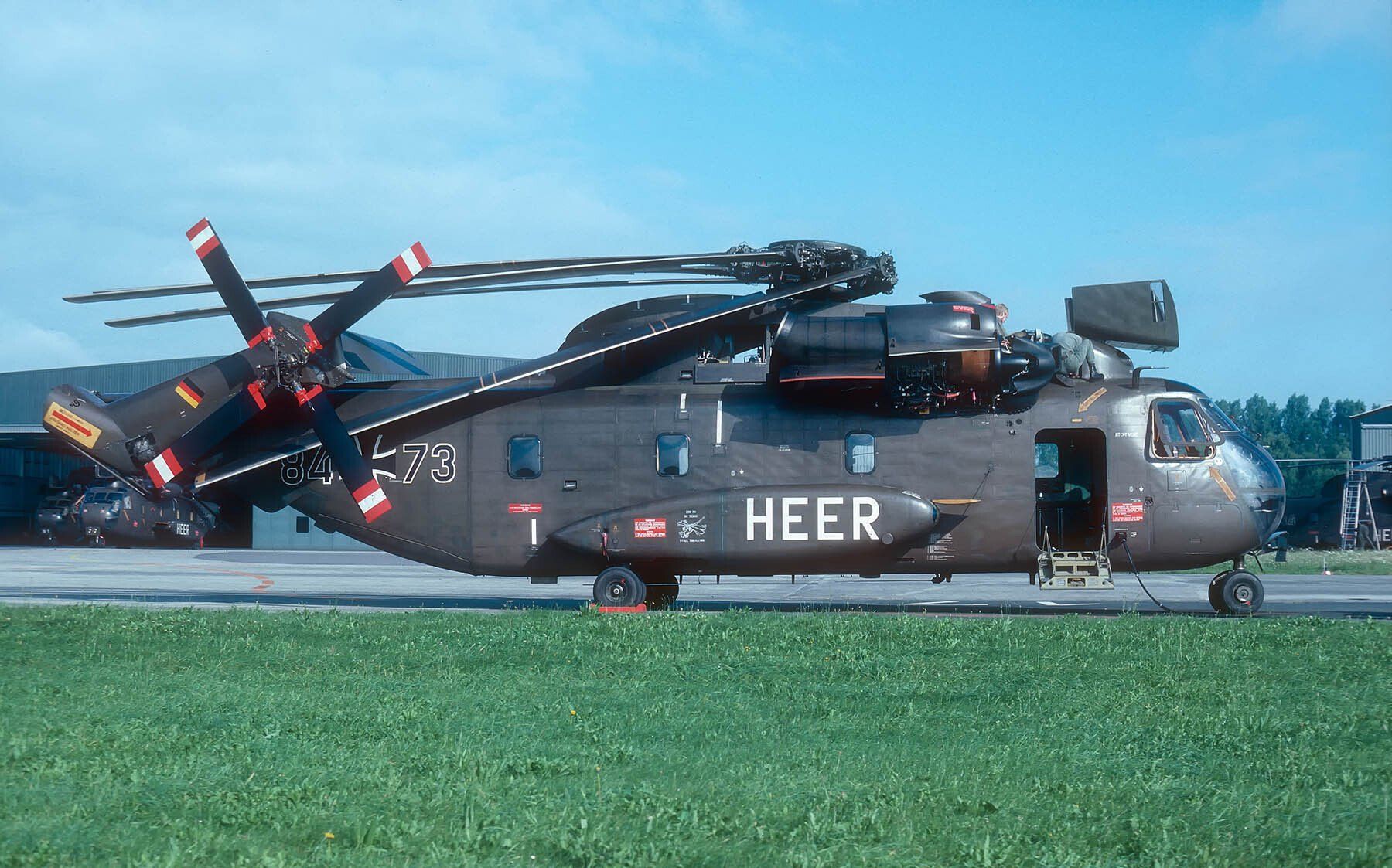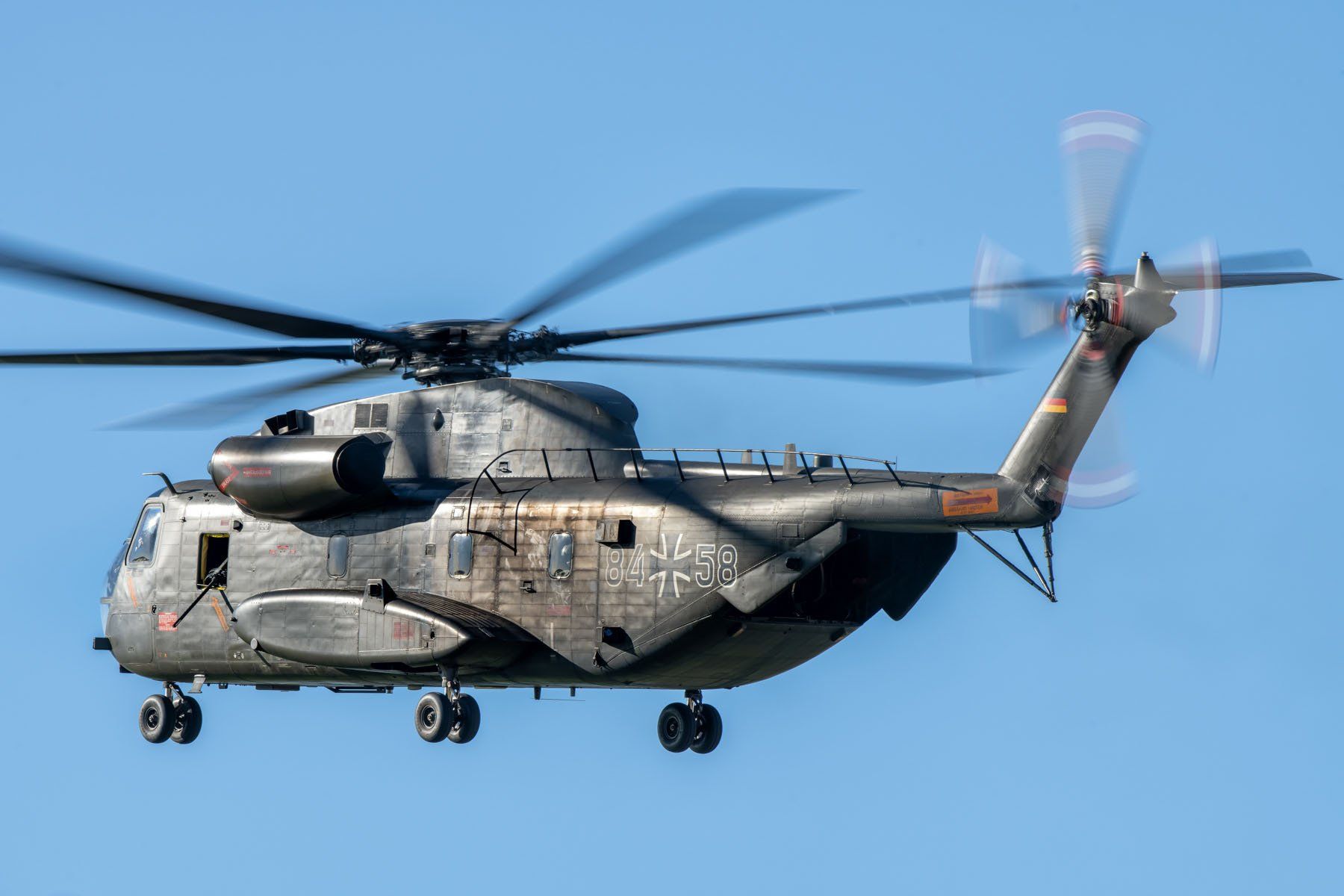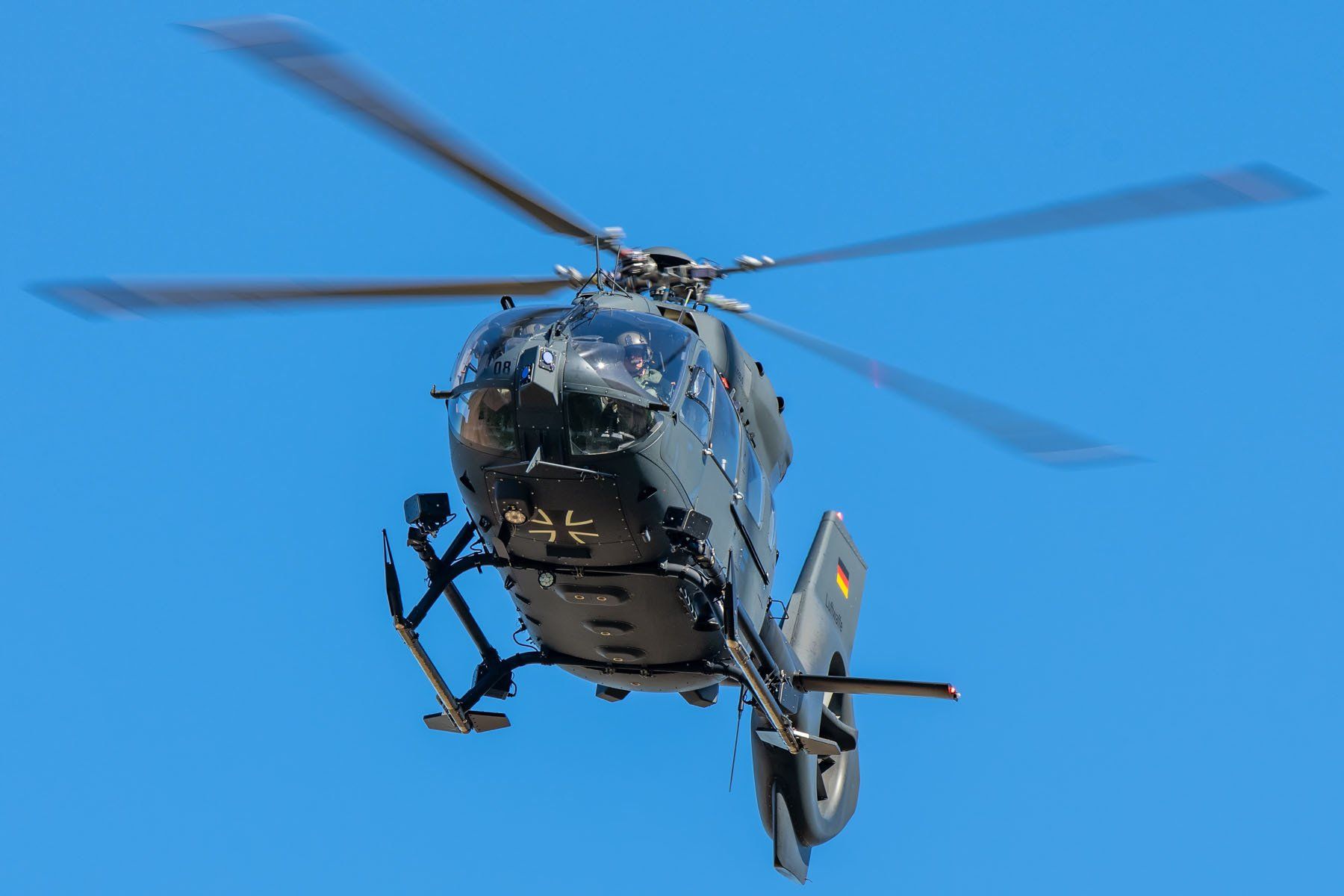Who would have foreseen in 1972, when deliveries of 112 Sikorsky CH-53Gs started to the German armed forces, that half a century later more than half of this fleet would still be going strong?
Well, they do, although maintaining these giant helicopters has become somewhat challenging. The Luftwaffe's Hubschraubergeschwader (Helicopter Wing) 64 is currently the sole operator of the type.
Text and photos: Emiel Sloot

Until its disbandment in 1994, the Luftwaffe's Hubschraubertransportgeschwader 64 – based at Ahlhorn with several detachments – was the air force's main rotary wing unit with a large number of Bell UH-1D Hueys, licence-built by Dornier. On 1 October 2010, HSG 64 was formed, providing the air arm again with a dedicated helicopter wing while adopting the badge of former HTG 64. The unit emerged from the rotary wing part of Lufttransportgeschwader 62 that was based at Holzdorf, taking over their UH-1Ds. Three weeks later, on 21 October, deliveries of new NH90 TGEE tactical helicopters commenced.
However, a major shift in assets resulted in the early disposal of the NH90s, of which only a handful had been delivered. On 13 December 2012, these, along with the Hueys, were handed over to the Heeresflieger (army air force). In return, HSG 64 received the army's fleet of CH-53s. Before, the Heeresflieger had operated these within three regiments. While Heeresfliegerregiment 35 at Mendig had already stood down in 2002, both the Mittlere Transporthubschrauber Regimente 15 at Bentlage and MTHR 25 at Laupheim transferred their equipment to HSG 64. In fact, the wing largely relocated to Laupheim, leaving only one squadron behind at Holzdorf.

Today, HSG 64 has three different variants in its pool, all being upgrades from the original model. Twenty-two CH-53GS received armour to protect its occupants; three door gunners – port, starboard and aft ramp – provide fire support with a 12.7mm M3M gun each; external tanks containing 4,920 liter additional fuel, extending the range up to six hours can be fitted on both sides; titanium spar rotor blades replaced the older ones; GPS navigation was installed; as well as night-vision compatible instrumentation to enable low-level flying in darkness. Also, an electronic defence suit called Elektronische Kampfführung (EloKa) was added, combining a laser/radar warning receiver as well as chaff and flares to counter missile threats.
Between 2010 and 2014, forty airframes were modified to CH-53GA in line with a product improvement programme. Lifetime was extended from 6,000 to 10,000 flying hours while secure radios, GPS, FLIR and extra internal fuel tanks were built in. The EloKa suite, similar to the GS variant, was also added. A new 4-axis autopilot along with new instrumentation made handling easier for the crew.
The CH-53GE was converted mainly for use by ISAF over Afghanistan, an area where German CH-53s would eventually operate for some eighteen years, amassing no less than 22,500 flying hours. These six examples feature additional self protection, newer instruments and an improved EloKa suite. Although more or less similar to the GS variant, the GE lacks external tanks.

The original roles of the large helicopters are still in effect, being aerial transport for personnel and equipment, the latter also carried as underslung loads. In addition, HSG 64 can be called upon for disaster relief and medical evacuation, but also for crisis situations where German citizens have to be evacuated from an unsafe or hostile environment. In case crew or personnel have to be rescued behind enemy lines, the GS and GE variants can fulfill a combat search-and-rescue (CSAR) role. And in case of a wildfire, 'Smokey' is rushed to the scene, being a 5,000 liter water container hanging underneath the helicopter.
With this versatile tasks, the CH-53 has seen a lot of action abroad, not only over Afghanistan as mentioned before, but also over Iraq, Congo, Kosovo, Albania and Bosnia-Herzegovina. However, both the extensive use and the age of the fleet have left their traces, as the air force faces quite some challenges to keep the helos operational until their planned retirement in 2030. Spare parts are increasingly hard to find – if at all. Until their phase-out, the CH-53s equip the 1. and 2. Fliegende Staffel at Laupheim as well as the 3. Fliegende Staffel at Holzdorf. HSG 64 has detached a maintenance squadron at Diepholz, and a flight simulator is located at Bückeburg for crew training.

While large in size and numbers, the CH-53 is not the only helicopter operated by HSG 64 though. Maintaining low profile, the 4. Fliegende Staffel at Laupheim supports Germany's special forces with a fleet of fifteen Airbus H145M LUH SOF (Light Utility Helicopter – Special Operations Forces). These troops can be deployed worldwide on a 24/7 basis, with the H145Ms (also designated BK.117D-2M) either flying in or being airlifted by an A400M to the theatre-of-operations. The squadron's tasks are determined as direct action, special reconnaissance or military assistance in support of the special forces. Troops can be either disembark conventionally, or deploy via fast roping. For airborne fire support, two 7.62mm MG6 guns can be mounted in each door opening, operated by the helicopter's Tactical Operator. External loads can be fitted under the helicopter's fuselage.
The helicopters entered service between December 2015 and June 2017, further expanding HSG 64's tasks although the operations of the 4. Fliegende Staffel are obviously shrouded in secrecy. The capabilities of the H145M however have not been unnoticed, as some foreign armed forces currently consider to purchase this capable platform.
Meanwhile, HSG 64 will prepare for the future. A replacement for the CH-53 has been found in the Boeing CH-47F Block II, which outran its rival CH-53K. Sixty aerial refueling-capable Chinooks are in the acquisition pipeline. These well-proven helicopters will enable the wing to fulfill its tasks for the next decades – maybe even for another half a century. ■